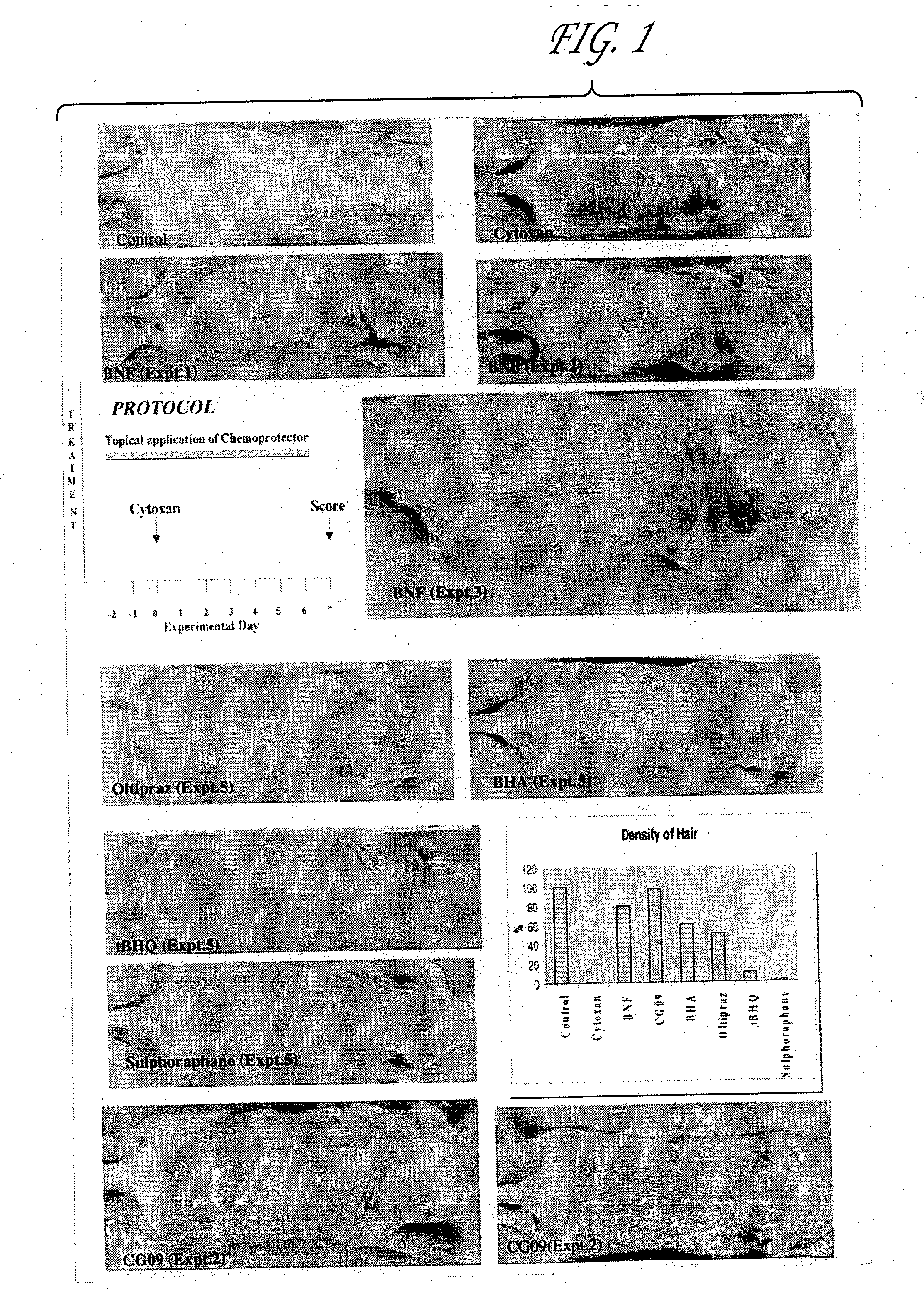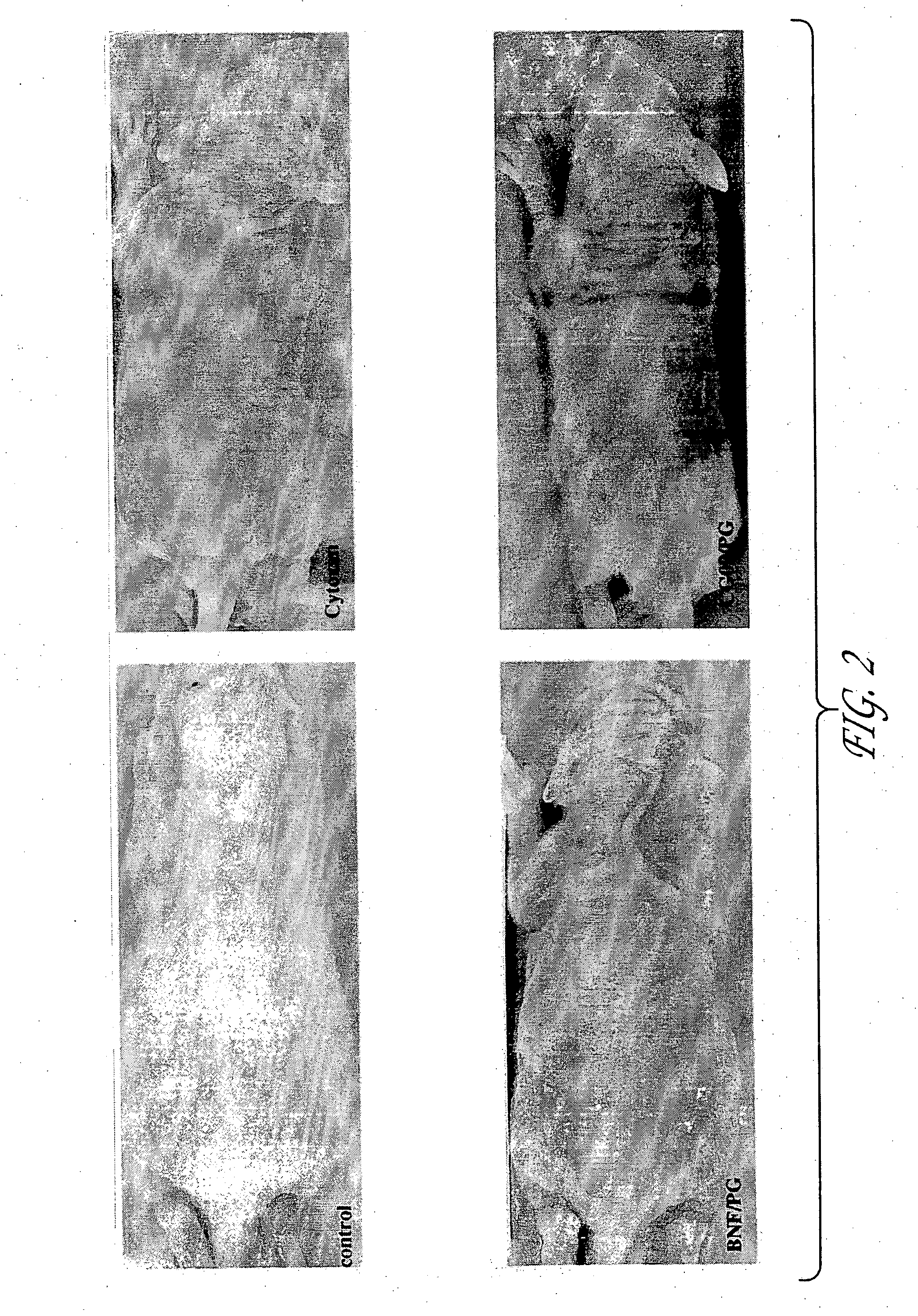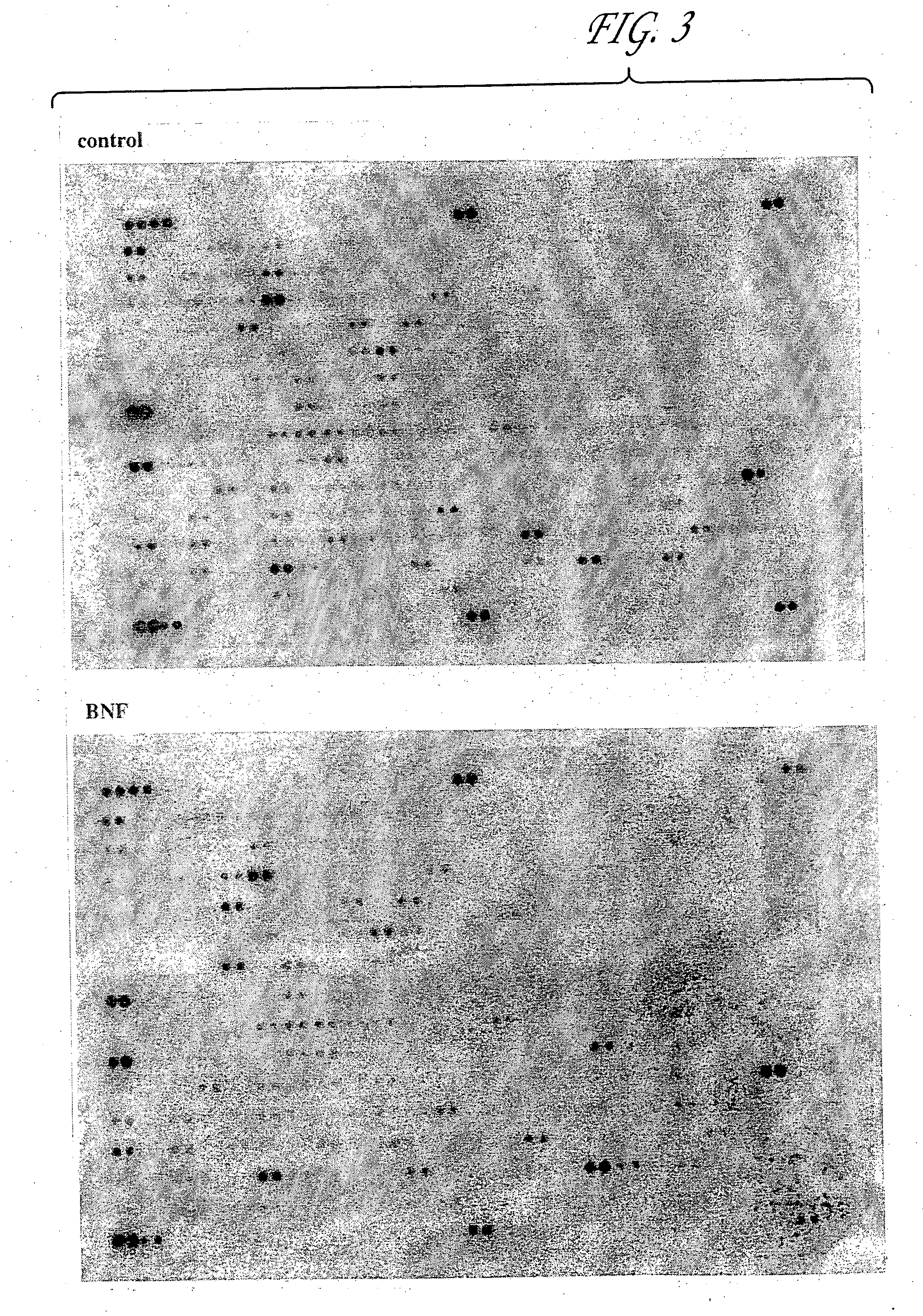Compositions and methods for protecting cells during cancer chemotherapy and radiotherapy
- Summary
- Abstract
- Description
- Claims
- Application Information
AI Technical Summary
Benefits of technology
Problems solved by technology
Method used
Image
Examples
example 1
Prevention of Chemotherapy-Induced Alopecia by Topical Application of Molecules that Induce Expression of Chemoprotective Gene Products
The inventors postulated that drug induced alopecia could to a large extent be successfully prevented by selective protection of hair follicles by expressing chemoprotective gene products such as GSTs, MRP, MDR, ALDH3 and the like, that are known to protect cells against cytotoxicity. Combined, increased expression of MRP and GST P1 has been found to confer high level resistance to the cytotoxicities of anticancer drugs (Morrow et al, 1998); however, expression of either MRP or GST alone was found to be less successful as these gene products work in synergy to protect cancerous cells against cytotoxicity by their coordinated action in the removal of the anticancer drugs from cells.
The experiments set forth in this example were designed with the idea of overexpressing these protective genes in hair follicle cells by delivering molecules that are k...
example 2
Effect of Small Molecule Inducers of Chemoprotective Genes on Chemoprotective Gene Expression in Skin
To elucidate the basic mechanism underlying this protective effect of B-NF and CG09, we studied the expression levels of chemoprotective genes such as GSTs, MDR, MRP and ALDH3, under the same topical treatment conditions as described in the previous example.
In brief, rat pups were treated with either CTX or B-NF and at different time intervals skin samples were collected and total RNA was extracted from them. The RNA was reverse transcribed to form the respective cDNAs in the presence of 32P dATP using primers specific for stress-related genes. The radiolabeled cDNA synthesized was used to probe a rat stress gene cDNA expression array consisting of 207 stress-related genes (Clontech) according to the manufacturer's protocol. The hybridized membrane was exposed to a phosphorimager screen and the image obtained was aligned with an orientation grid to identify the genes that are exp...
example 3
Identification of Carriers for Delivery of Chemoprotective Gene Inducers to Epithelial Cells
In order to achieve efficient delivery of a chemoprotective molecule into the skin, studies were conducted using various formulations of liposomes (phospholipid-based vesicles, cationic liposomes, nonionic liposomes, non ionic / cationic liposomes, pegylated liposomes, PINC polymer, and propylene glycol and ethanol mixture (commonly used vehicle for administering minoxidil). First, these formulations were used to entrap reporter genes such as those encoding the marker proteins Luciferase or β-galactosidase, or a fluorescent probe (Nile Red), and their delivery was tracked in the target tissue by the functional assay of the marker proteins delivered or fluorescence emission in the case of Nile Red. The liposomes were prepared as set forth below.
Phospholipid based vesicles. The preparation contained the following lipid mixtures in a 1:0.5:0.1 molar ratio: 1. DSPC: Cholesterol: DOTAP 2. DOPE...
PUM
| Property | Measurement | Unit |
|---|---|---|
| Time | aaaaa | aaaaa |
Abstract
Description
Claims
Application Information
 Login to View More
Login to View More - R&D
- Intellectual Property
- Life Sciences
- Materials
- Tech Scout
- Unparalleled Data Quality
- Higher Quality Content
- 60% Fewer Hallucinations
Browse by: Latest US Patents, China's latest patents, Technical Efficacy Thesaurus, Application Domain, Technology Topic, Popular Technical Reports.
© 2025 PatSnap. All rights reserved.Legal|Privacy policy|Modern Slavery Act Transparency Statement|Sitemap|About US| Contact US: help@patsnap.com



